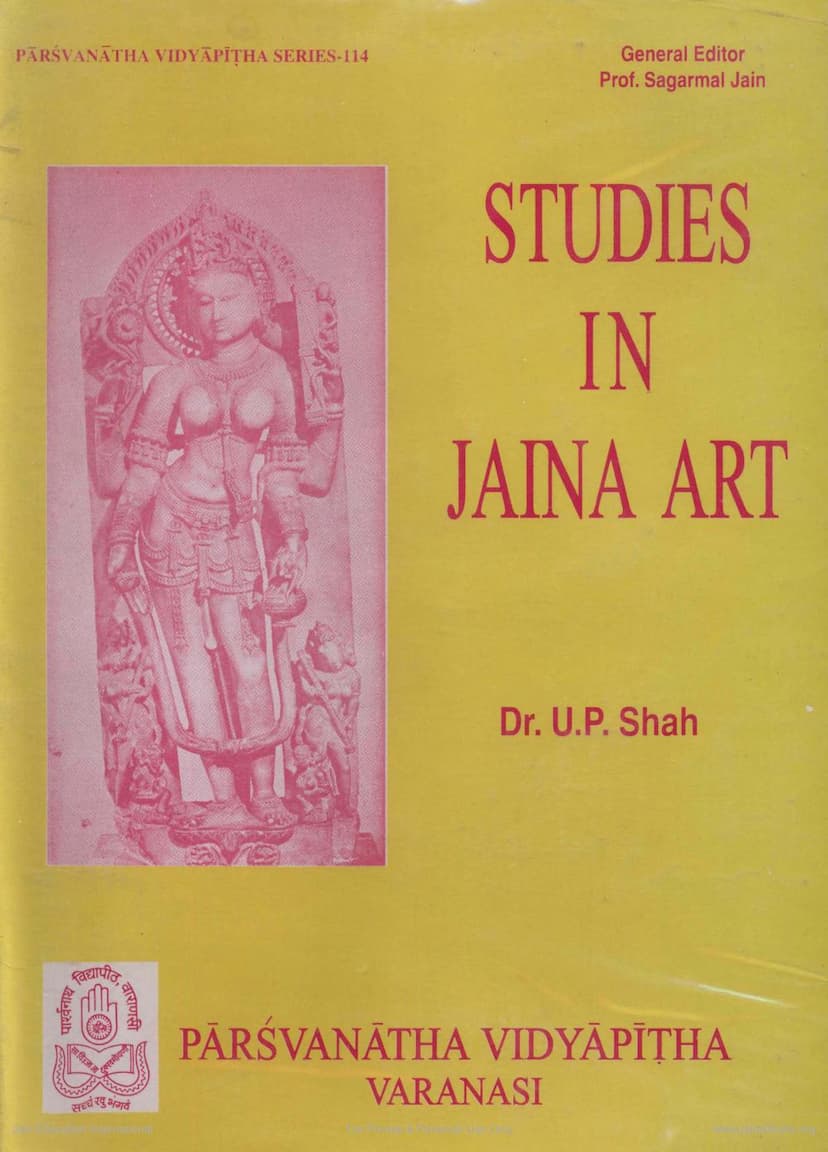Studies In Jaina Art
Added to library: September 2, 2025

Summary
This document is a comprehensive summary of "Studies in Jaina Art" by Dr. Umakant P. Shah, published by Parshwanath Vidyapitha. The book, a second reprint edition from December 1955, compiles four lectures delivered by Dr. Shah at the College of Indology, Banaras Hindu University, in March 1954.
The core of the book focuses on the study of Jaina art, covering a wide chronological span from pre-historic times to the medieval period, with a particular emphasis on Northern India. Dr. Shah's work aims to provide a connected and critical account of Jaina antiquities, including cave-temples, shrines, sculptures, and paintings, recognizing that art styles often transcend sectarian boundaries, with artists serving multiple faiths.
The book is structured into several key areas:
-
A Brief Survey of Jaina Art in the North: This extensive section (pages 16-49) provides a chronological overview of Jaina artistic expressions across various regions of North India. It begins with an examination of potential pre-historic Jaina art, moving through the Mauryan and Sunga periods, highlighting significant sites like the Udayagiri and Khandagiri hills in Orissa and Pabhosa. The Kșatrapa and Kușāņa periods are discussed with a focus on Mathura, particularly the Kankali Tila findings, and the evolution of Jina images and stūpa worship. The pre-Gupta and Gupta periods are covered, noting developments in Rājgir, Sarnath, and Gwalior. The transitional period (c. 600-1000 AD) sees the emergence of provincial schools, while the medieval period is explored through temple architecture at Khajuraho and Deogarh, and the flourishing of art under the Parmāras and Caulukyas in Western India, exemplified by the exquisite marble temples of Mount Abu. Paintings, particularly of the Western Indian School, are also a significant focus, with a discussion of their origins and stylistic evolution.
-
Symbol Worship in Jainism: This section (pages 39-122) delves into the rich symbolic language of Jaina art and ritual.
- Introductory: Sets the stage by discussing the aniconic nature of early worship and the symbolic representation of deities, tracing the likely origins of Jina image worship and its connection to Yaksha cults.
- Caitya, Stūpa, and Stambha: Explores the etymology and evolution of the term "Caitya," linking it to Vedic concepts of "cayana" and sacrificial altars. It discusses the various meanings of Caitya, from sacred trees and shrines to memorial structures and cult objects, tracing its usage in Vedic, Buddhist, and Jaina literature. The worship of Stūpas, often considered Caityas, is examined, noting their potential connections to earlier Sumerian Ziggurats and their presence in both heterodox sects. The significance of Stambhas (pillars), including the Mānastambha, is also detailed.
- Caitya-Vrksas: Focuses on the ancient practice of tree worship, evidenced from the Indus Valley Civilization, and its integration into Jaina tradition. It discusses the assignment of spirits to Vyantara gods and the symbolic representation of trees, particularly the Caitya-trees associated with Tirthankaras and their attainment of enlightenment.
- Āyāgapatas: Examines these "Tablets of Homage" primarily found at Mathura, dating from the Sunga and Kușāņa periods. These tablets, often depicting the Dharma-cakra, Tri-ratna, Stūpa, Caitya-trees, or auspicious symbols, are analyzed for their iconography and their connection to earlier Śilāpațas and the broader Yaksha-Naga cult.
- Samavasaraṇa: Details the elaborate Jaina preaching halls, constructed by gods, where Jinas deliver sermons. It describes the architectural plans, often circular or square, with multiple fortifications, gateways, and central pavilions, drawing parallels with stūpa architecture and potentially Ziggurats. The descriptions from both Svetambara and Digambara traditions are presented, highlighting the rich artistic and theological significance of these structures.
- Siddha-Cakra or Nava-Devatā: Discusses the popular Jaina yantra, representing the Five Supreme Ones (Pañca-Parameșțhins) and, in the Svetambara tradition, the four essentials for salvation. It explores the differences and commonalities between the Svetambara Siddha-Cakra and the Digambara Nava-Devatā diagrams, noting their antiquity and importance in Jaina theology and tantric practices.
- Auspicious Dreams: Explores the Jaina tradition of the fourteen (Svetambara) or sixteen (Digambara) auspicious dreams seen by the mother of a Tirthankara at conception, detailing their representations in miniatures and stone reliefs. It also touches upon dreams associated with Vasudevas, Baladevas, and Cakravartins, and the broader Indian belief in dreams as omens.
- Aṣṭamangala: Focuses on the eight auspicious symbols (Svastika, Śrivatsa, etc.) that are prevalent in Jaina worship from ancient times. Their representations in various art forms, their symbolic meanings according to texts, and the differences between the Svetambara and Digambara lists are discussed.
- Sthāpanā and Other Symbols: Explains the practice of Sthāpanā, a symbolic representation of a teacher used in Jaina discourses, and other ritual accessories like the mukhapaṭṭikā (mouth-cloth) and rajoharana (broom). It also revisits the worship of the Dharma-cakra and Caitya-trees.
- Aṣṭāpada, Sammeta-Sikhara, and Pañca-Meru: Discusses representations of these sacred mountains and cosmological concepts in Jaina art, noting their significance as pilgrimage sites and the artistic interpretations of these mythical locales.
- Nandiśvara-dvipa: Details the Jaina cosmological concept of this island-continent, known for its celestial gardens and eternal temples of the Arhats. Representations of the fifty-two Śāśvata-Jinālayas on Nandiśvara-dvipa are examined in both stone and metal, highlighting their popularity as symbols of eternal worship.
-
Appendix: Note on Stūpa, Samavasaraṇa and Ziggurat: This section specifically addresses the hypothesized architectural influence of Sumerian Ziggurats on Indian stūpa architecture and, consequently, on the Jaina Samavasaraṇa. It draws parallels in terms of tiered structures, platforms, and stairways, supported by textual and archaeological evidence.
The book is further enriched by an extensive Bibliography and an Index, along with numerous Plates illustrating the discussed artworks, providing visual support to the textual analysis. Dr. Shah's work is considered a foundational text for understanding the evolution and diverse manifestations of Jaina art, offering valuable insights into the religious, cultural, and historical contexts that shaped it.